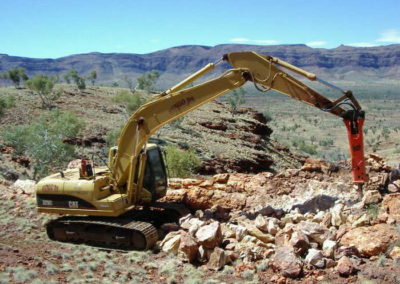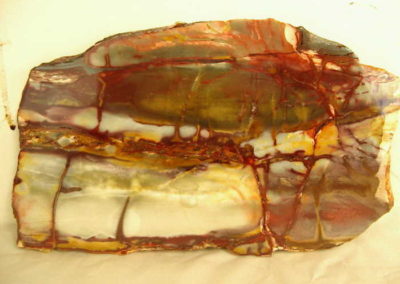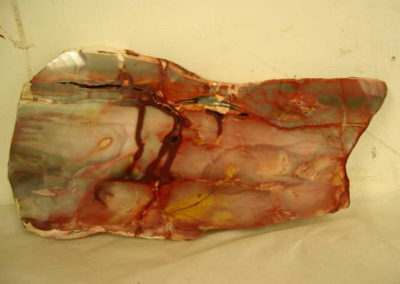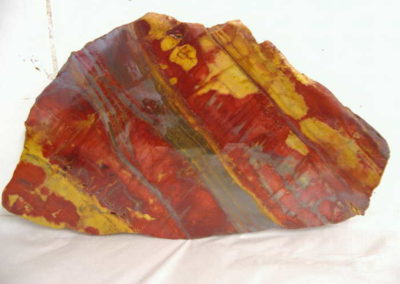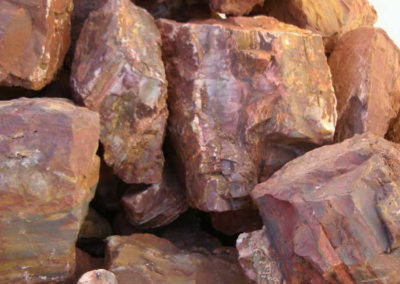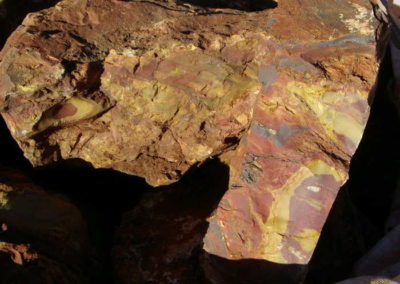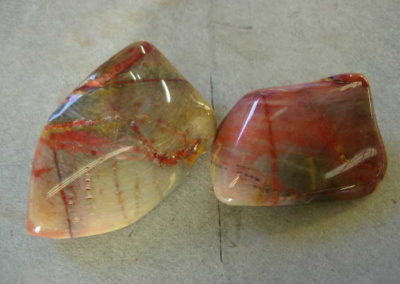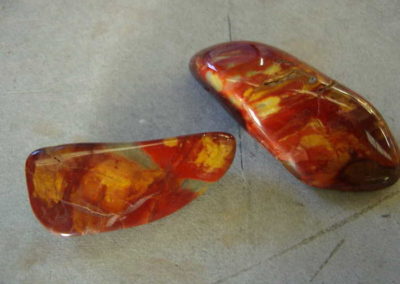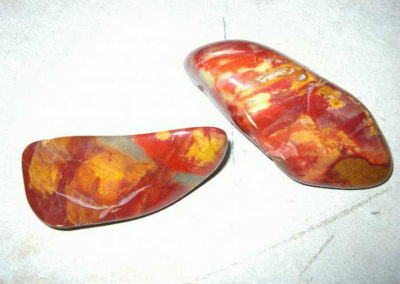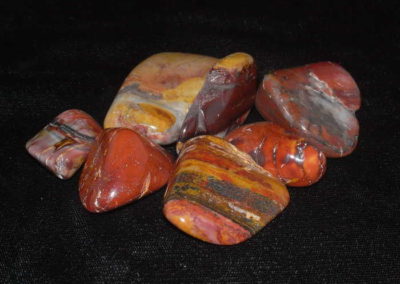Duck Creek Jasper is found on Hamersley Station, a large cattle grazing property about 75 km west of Tom Price in the Pilbara region of Western Australia.
Duck Creek Jasper is a metamorphosed sedimentary rock that is part of the quartz family, being very high in silica but with a high percentage of impurities, in this case mainly iron oxides. These iron impurities give Duck Creek Jasper its striking range of colours, from vivid reds through to various shades of yellow, orange, brown, black and grey. The stone often has bands of higher purity iron, such as hematite flashing across it.
The deposit sits on top of the Marra Mamba iron formation, in one of Western Australia’s main iron ore provinces, which explains its high iron content. It is close to operating iron ore mines. This area was once a vast inland sea, where iron was pumped from underground vents into a very calm body of water. The heavy iron particles settled in layers on the sea floor, building up over time. Heat, pressure and an oxygen atmosphere, transformed these layers into the iron ore we see today. The Duck Creek Jasper was a later but similar layered formation, with much of the iron replaced by silica. The iron formations date back 2.4 – 2.8 billion years, but the jasper deposit is likely younger than this.
With a MOH’s hardness of 6 – 6.5, Duck Creek Jasper is well suited to beads and cabochons, specimen pieces and slabs, carvings and other ornamental objects.

